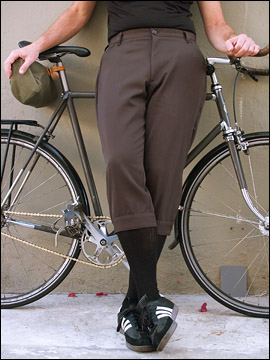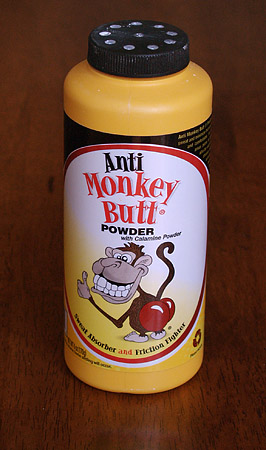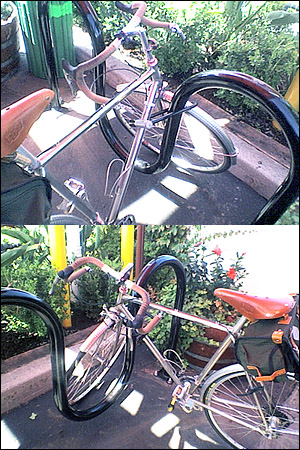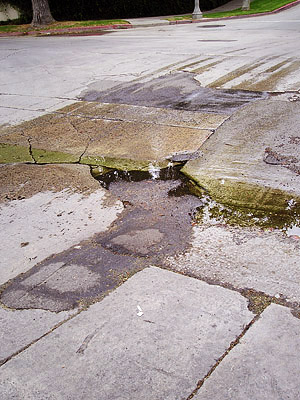Many tout the Web, with its burgeoning "social networking" sites, as a re-creator of our lost town squares. Many others, however, see that, rather than bringing us together, such affinity-based "virtual communities" tend to split us apart, into narrowly-focussed clusters of me-too-ists. They do not replace the random gatherings you find in what Ray Oldenburg called "third places," places that are neither home nor work.
Citiwire's Mary Newsome notes, in Where Everybody Knows Your Name, that people on the web tend to separate themselves into clans, but that in physical "third places," you meet people you don't agree with, as well as people you do agree with. Not only that, the customs of such places--be they eating or drinking houses or public squares--foster a civil exchange of ideas, and this leads to refinement of both ideas and the persons holding them; whereas "discourse" in Internet communities too often consists of mere agreement--and disagreement, all too often, of rudeness.
What's this got to do with bicycling?
Well, of course, the bicycle is a device that takes you somewhere; when you ride, you end up in a real place, as a real person, and in the company of other real persons. And the bicycle fosters a neutral affinity. All kinds of people love bikes, and all kinds who don't particularly love them still ride them and recognize their fellows in the craft.
Some of my cycling friends are radical anarchists, some are Goldwater Republicans, and there is everything in between. Sure, we email back and forth, post on blogs and Twitter, write solipsistic maunderings on our Facebook "walls"--but in the end, we get off our chairs and onto our bikes and go somewhere, places--"third places"--where we meet each other face-to-face, entering into a far richer experience than anything Facebook or its clones can offer.
And in those places we are not "avatars," but living, breathing human beings, with all the love and uncertainty we feel written on our faces.
We hail each other on the road, we buy each other beers or coffees when we meet, we talk, we ride together and engage the Earth in all its vigorous literality.
This is as much a value of the bicycle as its cleanliness, its efficiency, or the "simple pleasure" of riding it.
The car hides us--from others, from the Earth, from ourselves. The bicycle helps make our own lives real.
On this Yom Kippur, this "Day of Atonement," whose necessary word is derived from roots meaning a "at-one-ment," reconciliation as well as reparation, let's also remember our humble bicycles as instruments of real human congress amongst our often warring selves.
We also recommend you read Simon Baddeley's excellent article here, "Wire Wheels, Wired World", in Bicycle Fixation.
Richard Risemberg on Mon, 28 Sep 2009 10:44:44 -0800 [link]
 As usual, it took longer than we had hoped, but we have finally restocked our Classic Wool Knickers, and introduced a sweet new color too: they are now available in Olive Brown, with a black satin gusset, as well as our flagship Charcoal Gray with burgundy gusset. (Unfortunately, because of a shortage of gabardine, we have fairly few of the charcoal gray version.)
As usual, it took longer than we had hoped, but we have finally restocked our Classic Wool Knickers, and introduced a sweet new color too: they are now available in Olive Brown, with a black satin gusset, as well as our flagship Charcoal Gray with burgundy gusset. (Unfortunately, because of a shortage of gabardine, we have fairly few of the charcoal gray version.)We're very happy with the new color, and we're sure you'll love it too, for mile after mile after mile....
So they're here! Click on over to the Classic Wool Knickers and take a look.
And have an elegant autumn!
Richard Risemberg on Mon, 21 Sep 2009 16:11:56 -0800 [link]
 It really is called "Anti Monkey Butt Powder," as you can see from the picture, and it really does keep your cheeks fresh even on long, arduous rides in hot weather. We just spent nearly two months testing it, during most of which time Los Angeles was enduring a relentless heat wave that resulted in a 170,000-acre forest fire just north of town, and the stuff worked well. Well enough that we'll keep using it!
It really is called "Anti Monkey Butt Powder," as you can see from the picture, and it really does keep your cheeks fresh even on long, arduous rides in hot weather. We just spent nearly two months testing it, during most of which time Los Angeles was enduring a relentless heat wave that resulted in a 170,000-acre forest fire just north of town, and the stuff worked well. Well enough that we'll keep using it!We've used it on every ride of over ten miles since we got it, and that's a lot of miles.
For more, read our review of Anti Monkey Butt Powder
Richard Risemberg on Sun, 20 Sep 2009 14:11:34 -0800 [link]
Keep an eye on this blog, or our Twitter page so you'll know when they're ready to sell. (We have to photograph them first, because of the new color.)
And it looks as though we'll have a couple of pieces in Momentum magazine's "Urban Legend Fashion and Art Show" at Interbike, if all goes well!
Richard Risemberg on Fri, 18 Sep 2009 07:11:56 -0800 [link]
 This is the new bike rack at our local Trader Joe's market, at Third and La Brea. In fact, this is the new, supposedly improved bike rack, replacing an older one of the same configuration that was neither black nor bolted down. You will note some of the salient features of this rack.
This is the new bike rack at our local Trader Joe's market, at Third and La Brea. In fact, this is the new, supposedly improved bike rack, replacing an older one of the same configuration that was neither black nor bolted down. You will note some of the salient features of this rack.First and foremost, as you will gather from the awkward position of the front wheel of the bike (Gina's nickel-plated Miyata, Vivian), that the rack is placed too close to the planter curb to be easily usable. The wheel in this position makes the bike more likely to fall, and makes it utterly impossible to use the more secure short-shackle U-locks. It also makes it impossible to put as many bikes into the rack as it was designed to hold.
That's all right, though, as Trader Joe's is evidently not interested in serving their bike-riding customers, since they have also arranged two heavy planters immediately next to the rack, taking up two more bike parking spaces. This changes a four-bike rack into a one-bike rack. (There was, briefly, a second bike parked there, on secured by a long and flimsy cable from top-tube to rack, as it couldn't actually park in the rack.)
So now Trader Joe's can brag about "bike parking" and "being green," when it has actually reduced the available bicycle parking at this store.
The sad thing is that I spoke to the manager about the earlier rack, and he raised my hopes by saying that they were going to add a "better one" in a few weeks. I gave him some verbal advice, and followed that up with a polite note to the Trader Joe's administrative offices, including a link to the bicycle parking guidelines published by the Association of Bicycle and Pedestrian Professionals. The manager acknowledged receiving these guidelines from the main office.
When I went by a few weeks later, I saw this rack in its present placement, but not fully bolted down. I mentioned the problem to the same manager, and he said that they would move the rack in a day or two.
Today, the rack was firmly captured with very large, very tight bolts--in the exact same location.
When I was still with my ex, I shopped for a family of three exclusively by bike--an ordinary bike with a rear rack and fold-out grocery panniers attached. I could easily carry seventy dollars' worth of groceries per trip, in less-inflated dollars. So don't tell me cyclists don't spend enough money to make it worthwhile accommodating them. Actually, when the matter's been studied, we find that cyclists by and large spend more than drivers--especially at stores that don't sell much in the way of bulk items, such as Trader Joe's.
But the drivers get a parking lot that covers (wastes) nearly one-quarter of the block the store occupies--and cyclists get insults.
I have also been shopping at this Trader Joe's for upwards of fifteen years. But I don't know how long I will feel like keeping it up. Besides the insult, I don't like the hypocrisy. Anything for cars--a kick in the face for cyclists. And "green" braggadocio in their newsletters.
Hey, Trader Joe's--get real, will you?
----------------------------------------------------------
Addendum (1 October 2009): I rode by the Trader Joe's on Olympic near Barrington yesterday, and they at least had an excellent bike rack set-up. Two four-loop racks, properly placed so that one can actually lock a bicycle to them. Especially as they were full of bikes, whose owners were no doubt inside spending money.
I wish the one in my neighborhood would get a clue!
Richard Risemberg on Sat, 12 Sep 2009 16:45:44 -0800 [link]
The dirt begins a few miles west of the Sepulveda Pass, and ends at Topanga Canyon Road, the former hippie haven now almost entirely gentrified, VW vans and mountain bikes replaced by BMWs and yuppified Harleys, but still a beautiful canyon.
I chose Trevor, as he wears both wider tires and lower gearing than the Bottecchia, though he's still a fixed-wheel. Though a bit tired from recent colds and a bout of food poisoning, I headed west on Wilshire to the UCLA area, where I picked up Sepulveda Boulevard. A brief conversation with a fellow riding a beautiful vintage Jack Taylor that he had borrowed from his dad, and then across one bridge and up a bit to Mulholland itself (which doesn't, oddly, connect with Sepulveda directly), back across the freeway, then up and up and along the tree-shaded curves of the last fancy neighborhoods just east of the Santa Monica Mountains Park.
Dirt Mulholland is just a turn in the road where the pavement disappears, marked by a number of state park signs, and usually a few SUVs left by hikers and MTB folks. I waited a good hour or so--I am always early to meetups, and everyone else in LA is always late--but, when airplanes weren't passing by, it was remarkably quiet; I could hear leaves moving ten yards away, and when I spoke to a mountain biker as he put his steed away, fifty feet off, we spoke in normal tones without the least effort.
At last the Rivendellers showed up, with only three actual Rivendell bicycles, and we began the "official" ride.
Trevor and his Vittoria Randonneur Pro tires handled the dirt better than I expected, but my inexperience in riding loose surfaces made me pretty slow on the downhills. (As did my intense consciousness of having no health insurance.) However, most of the first half of the ride was uphill, where the 66" fixed gear kept me working hard but moving fast--relative to a string of riders in their granny gears, of course. A lot of climbing--to judge from my Veloroutes plot of the ride, at least 2200 feet of the total of over 3800 feet of climbing took place within the nine or ten miles of dirt I rode. Despite being geared too high--60" would have been much more comfortable--I walked only one appallingly steep quarter mile of the ride.
The descents were, as I said, a bit spooky to me, who have never ridden mountain bikes or much dirt at all, so when we arrived at Topanga Canyon State Park for water and rest, I (and a couple of others) left the group and rode down Topanga Canyon Boulevard to the sea. Once at the beach I felt practically home, though I still had some miles to traverse.
Forty-five miles total, and the vast quiet desert hills beautiful under the September sun. One of the fellows (Esteban, I think) posted photos on Flicker; see them here.
Next time? Lower gearing, wider tires, maybe wider handlebars. And a great deal more food in the saddlebag!
A trip to and through the wilderness, no car required.
Richard Risemberg on Mon, 07 Sep 2009 12:19:19 -0800 [link]
Cities, Bicycles, and the Future of Getting AroundFor more information, go to The Library Foundation of Los Angeles.
An Evening with: David Byrne, artist/musician; Jimmy Lizama, co-founder, Bicycle Kitchen; Michelle Mowery, senior project coordinator, bicycle planning and programming. LADOT; & Donald Shoup, professor of Urban Planning, UCLA
Musician, artist, author and devout bicyclist David Byrne turns his attention to the fractured, car-mad city of Los Angeles. How can LA--with one of the world's most challenging transportation systems--become a more bicycle-friendly city? How might the city change if more people made a bicycle their primary mode of transportation? Join David Byrne as he leads a panel of bike advocates, city officials and urban planners in examining the bicycle's role in transforming the urban experience.
Panelists: Jimmy Lizama, co-founder, the Bicycle Kitchen; Michelle Mowery, Senior Bicycle Coordinator, LADOT; Dr. Donald Shoup, Professor of Urban Planning, UCLA.
Bicycle valet services provided by the Los Angeles County Bicycle Coalition.
Richard Risemberg on Mon, 07 Sep 2009 09:28:25 -0800 [link]
West Hollywood is, like Beverly Hills, a small enclave completely surrounded by Los Angeles, not as wealthy by any means as its cousin a few miles south but considerably more progressive, and it delighted me to hear of Mayor Land's, and the city's, interest in sustainable development, and especially in support of urban bicycling.
We discussed all manner of things, from tax structures to bikelanes and sharrows to parking (both for automobiles and for bicycles) to watershed issues, but the focus of our discussion was, of course, urban bicycling.
Mayor Land is a wonderful and witty, intelligent person in her own right, and to hear of her and the city's serious dedication to re-creating a community along sustainable lines, in ways that enhance enhance community feeling and the local economy while still helping heal the environment, really gave a positive glow to the weekend.
I may be working with Mayor Land and West Hollywood more as time goes by, and will keep you posted here.
Richard Risemberg on Sun, 06 Sep 2009 07:10:47 -0800 [link]

The "Hudson River," after its second "repair" in four years....
Beside feeding the algae, the water constantly undermines the roadway, requiring repeated, costly, and ineffective repairs. The high water table (a stream has been culverted under it) causes water to seep into a basement half a block up Hudson, and the owners of the house pump it out into the street-- a flow that continues day in and day out, and has for at least fifteen years that I know of. Compounded by the overwatering of lawns and gardens typical of the rich folks who live in that area, and who laugh at the DWP's fines for water wasting. (We are in the tenth year of yet another drought.)
The DWP says it can't do anything about the sump pumps, so I've suggested to them and to the Bureau of Street Services here that they at least put in a slotted drain channel at 4th, to prevent the water from pooling and feeding the algae.
And now, six weeks after my second--or was third?--contact, I received the following from BSS:
Your electronic message to the Bureau of Street Services, dated 7/14/2009, concerning a constant water flow at the intersection of 4th and Hudson, has been received by the Investigation and Enforcement Division.So maybe, just maybe, this prime bike route--which the Los Angeles County Bicycle Coalition is striving to have designated as LA's first "bicycle boulevard"--will actually lose this hazard that has been threatening, and harming, cyclists for half a generation!
Sr. Investigator Morales has been assigned to inspect the location and provide you with a report on the steps that have been/will be taken to resolve this matter.
Richard Risemberg on Thu, 03 Sep 2009 14:17:54 -0800 [link]



